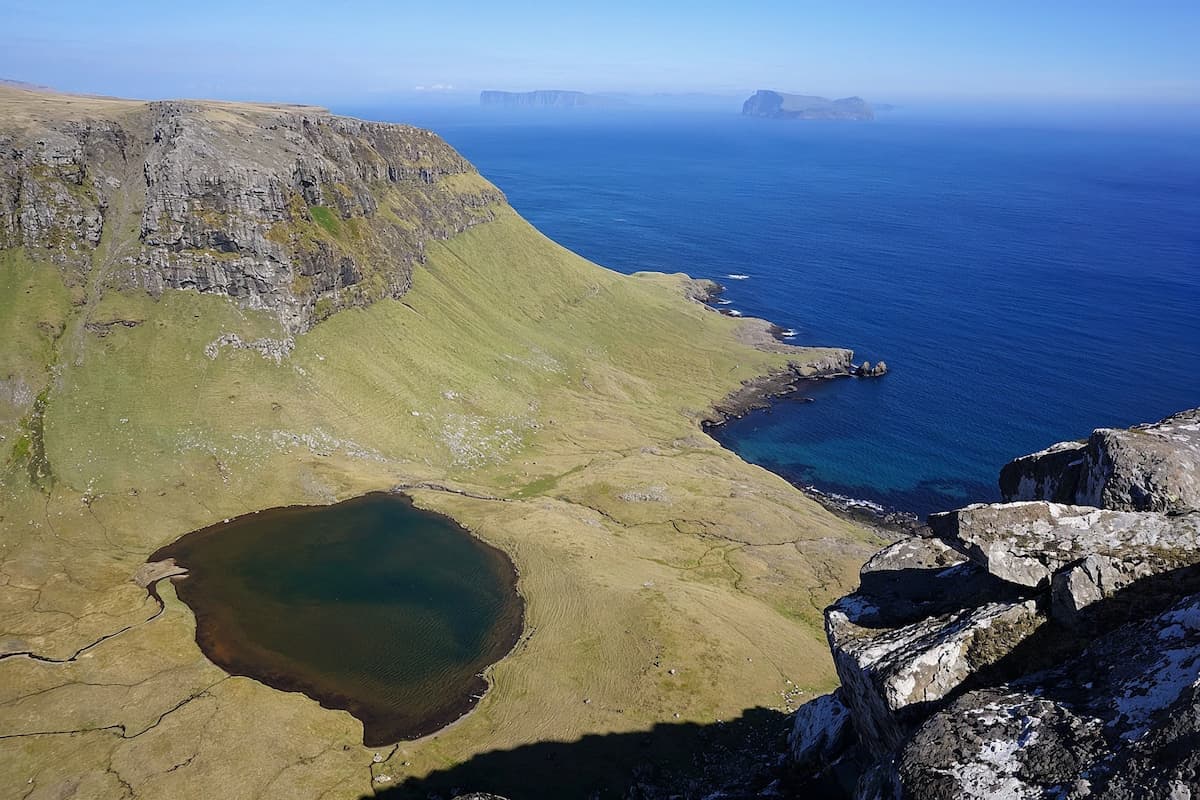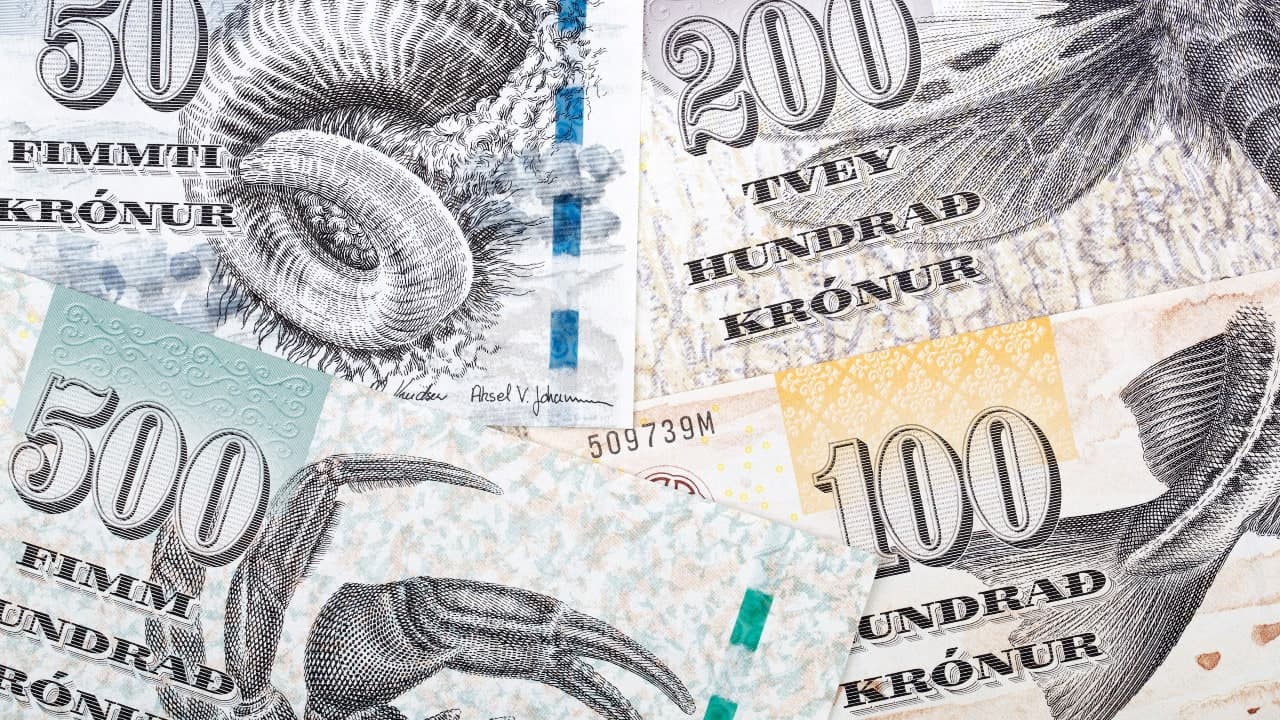

The currency of the Faroe Islands is called “Krona”. One Krona is divided into 100 “Oyrur” (singular “Oyra“).
The following coins are used: 50 oyrur and 1, 2, 5, 10 and 20 kroner. Paper money is available in 50, 100, 200, 500 and 1000 kroner.
The Faroese króna is issued by Danmarks Nationalbank, the central bank of Denmark. The ISO-code of the currency is DKK and the abbreviation is KR.
The Króna is not a real separate currency, but a variant of the Danish krone. As a result, it does not have an ISO 4217 code of its own and instead uses that of Denmark’s national currency, the DKK. Although, unofficial the ISO code FOK is used.
Visually, it differs only in the print motif of the Danish crown, which includes local Faroese landscapes and animals.
Krona means “crown” in Danish and Faroese.
The National Bank of Denmark will change Danish kroner to Faroese krónur and vice versa free of charge.
Also Danish kroner are widely accepted as a means of payment on the Faroe Islands.
Travelers are advised to exchange their remaining Faroese Króna to a different currency before leaving the islands, as it is often hard to exchange them outside the Faroe Islands or Denmark.
The Danish krone was used in the Faroes when German troops invaded and occupied Denmark on April 9, 1940. As a result of the occupation, all trade between the Faroes and Denmark came to a halt, leaving two markets to develop independently of one another. On May 31st, special Faroese banknotes were put into circulation. They were ordinary Danish banknotes with a distinct stamp. The unstamped Danish notes were replaced by these notes at par.
The currency has been a fixed exchange rate currency since 1940, when it became pegged to the British Pound.
Since 1949 the currency is pegged to the Danish krone.